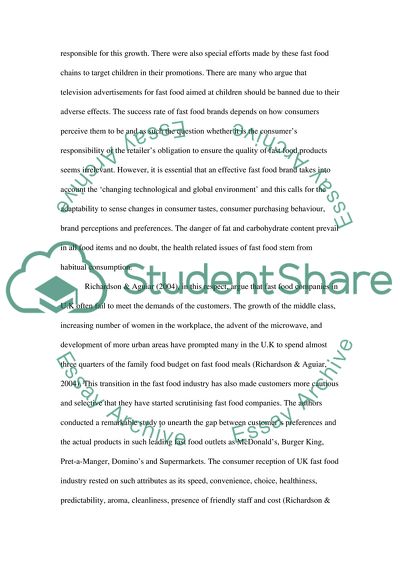Cite this document
(Fast Food: Positive and Negative Issues Report Example | Topics and Well Written Essays - 1750 words - 1, n.d.)
Fast Food: Positive and Negative Issues Report Example | Topics and Well Written Essays - 1750 words - 1. https://studentshare.org/health-sciences-medicine/1749665-fast-food-positive-and-negative-issues
Fast Food: Positive and Negative Issues Report Example | Topics and Well Written Essays - 1750 words - 1. https://studentshare.org/health-sciences-medicine/1749665-fast-food-positive-and-negative-issues
(Fast Food: Positive and Negative Issues Report Example | Topics and Well Written Essays - 1750 Words - 1)
Fast Food: Positive and Negative Issues Report Example | Topics and Well Written Essays - 1750 Words - 1. https://studentshare.org/health-sciences-medicine/1749665-fast-food-positive-and-negative-issues.
Fast Food: Positive and Negative Issues Report Example | Topics and Well Written Essays - 1750 Words - 1. https://studentshare.org/health-sciences-medicine/1749665-fast-food-positive-and-negative-issues.
“Fast Food: Positive and Negative Issues Report Example | Topics and Well Written Essays - 1750 Words - 1”. https://studentshare.org/health-sciences-medicine/1749665-fast-food-positive-and-negative-issues.


